In the P - V diagram, I is the initial state and F is the final state. The gas goes from I to F by
(i) IAF, (ii) IBF and (iii) ICF.

The heat absorbed by the gas is
The same in all three processes
The same in (i) and (ii)
Greater in (i) than in (ii) A B C
The same in (i) and (iii)
The correct Answer is:C
ΔQ=ΔU+ΔW
Since, ΔU is same for all process
ΔW1 = +ve, ΔW2=0,ΔW3 = -ve ∴ΔQ1>ΔQ2
Topper's Solved these Questions
- THERMODYNAMICSBOOK - ERRORLESSCHAPTER - THERMODYNAMICSEXERCISE - NCERT BASED QUESTIONS (ISOTHERMAL PROCESS)
16 Videos
- THERMODYNAMICSBOOK - ERRORLESSCHAPTER - THERMODYNAMICSEXERCISE - NCERT BASED QUESTIONS (ADIABATIC PROCESS)
31 Videos
- SURFACE TENSIONBOOK - ERRORLESSCHAPTER - SURFACE TENSIONEXERCISE - ASSERTION & REASON
11 Videos
- THERMOMETRY, THERMAL EXPANSION AND CALORIMETRYBOOK - ERRORLESSCHAPTER - THERMOMETRY, THERMAL EXPANSION AND CALORIMETRYEXERCISE - ASSERTION & REASON
10 Videos
Similar Questions
When a thermodynamic system is taken from an initial state I to a final state F along the path IAF, as shown in Fig. the heat energy absorbed by the system is Q=55J and work done by the system is W=25J. If the same system is taken along the path IBF, the value of Q=35J.
(a) If W=−15J for the curved path FI, how much heat energy is lost by the system along this path ?
(b) If U1=10J, what is UF ?
(d) If UB=20J, what is Q for the process BF and IB ?
View SolutionSix grams of hydrogen gas at a temperature of 273 K isothoermally expanded to five times its initial volume and then isochorically heated so that the pressure in the final state becomes equal to that in the initial state. Find the total amount of heat absorbed by the gas during the entire process.
View Solution
Knowledge Check
One mole of an ideal gas is taken from state A to state B by three different processes (a) ACB, (b) ADB and (c ) AEB as shown in the P−V diagram. The heat absorbed by the gas is
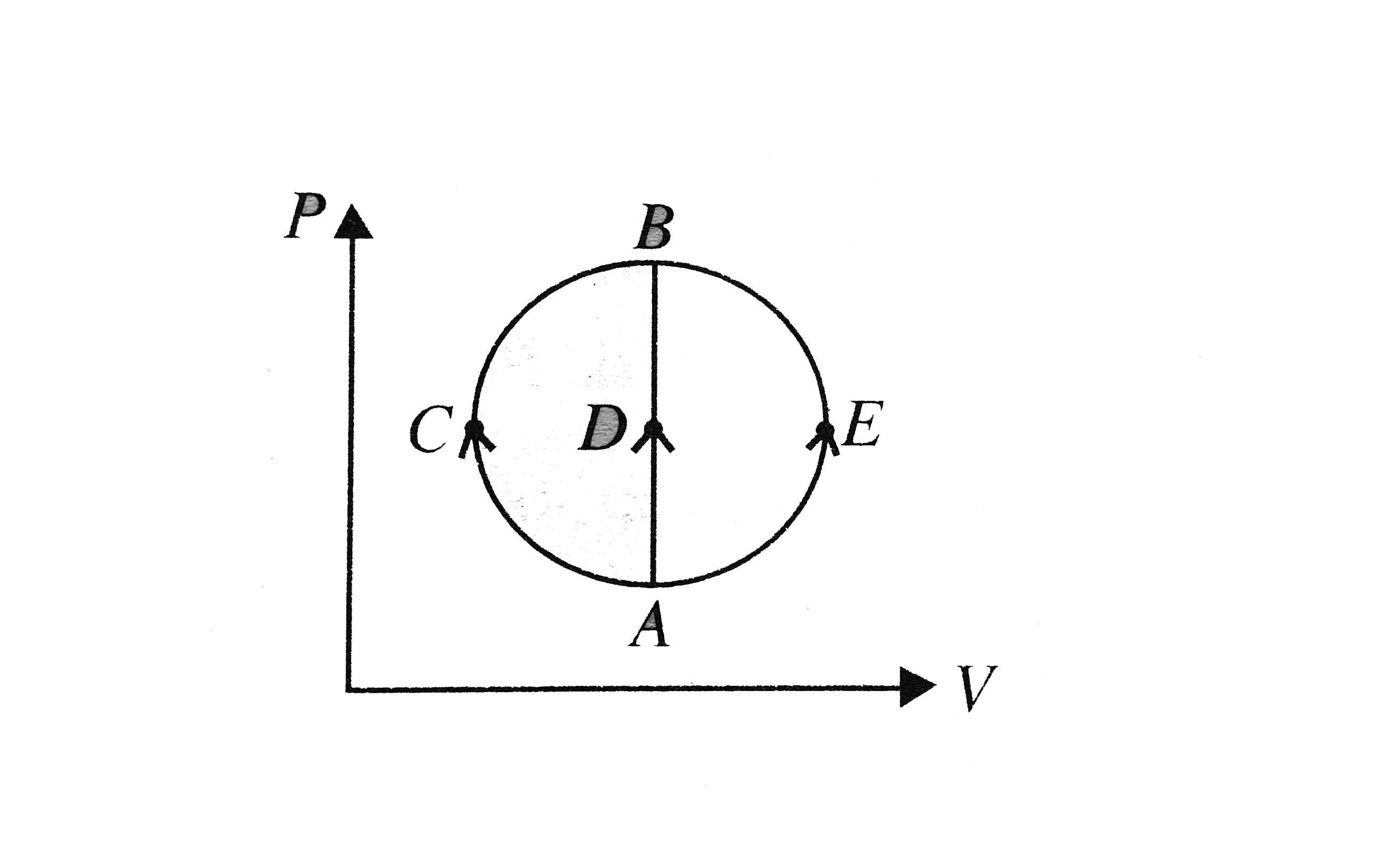 Agreater in process (ii) than in (i)Bthe least in process (ii)Cthe same in (i) and (iii)Dless in (iii) than in (ii)
Agreater in process (ii) than in (i)Bthe least in process (ii)Cthe same in (i) and (iii)Dless in (iii) than in (ii)One mole of an ideal gas is taken from state A to state B by three different processes (a) ACB, (b) ADB and (c ) AEB as shown in the P−V diagram. The heat absorbed by the gas is
 Agreater in process (b) than in (a)Bthe least in process (b)Cthe same in (a) and (c )Dless in (c ) than in (b)
Agreater in process (b) than in (a)Bthe least in process (b)Cthe same in (a) and (c )Dless in (c ) than in (b)An ideal gas of mass m in a state A goes to another state B via three different processes as shown in Fig. If Q1,Q2 and Q3 denote the heat absorbed by the gas along the three paths, then
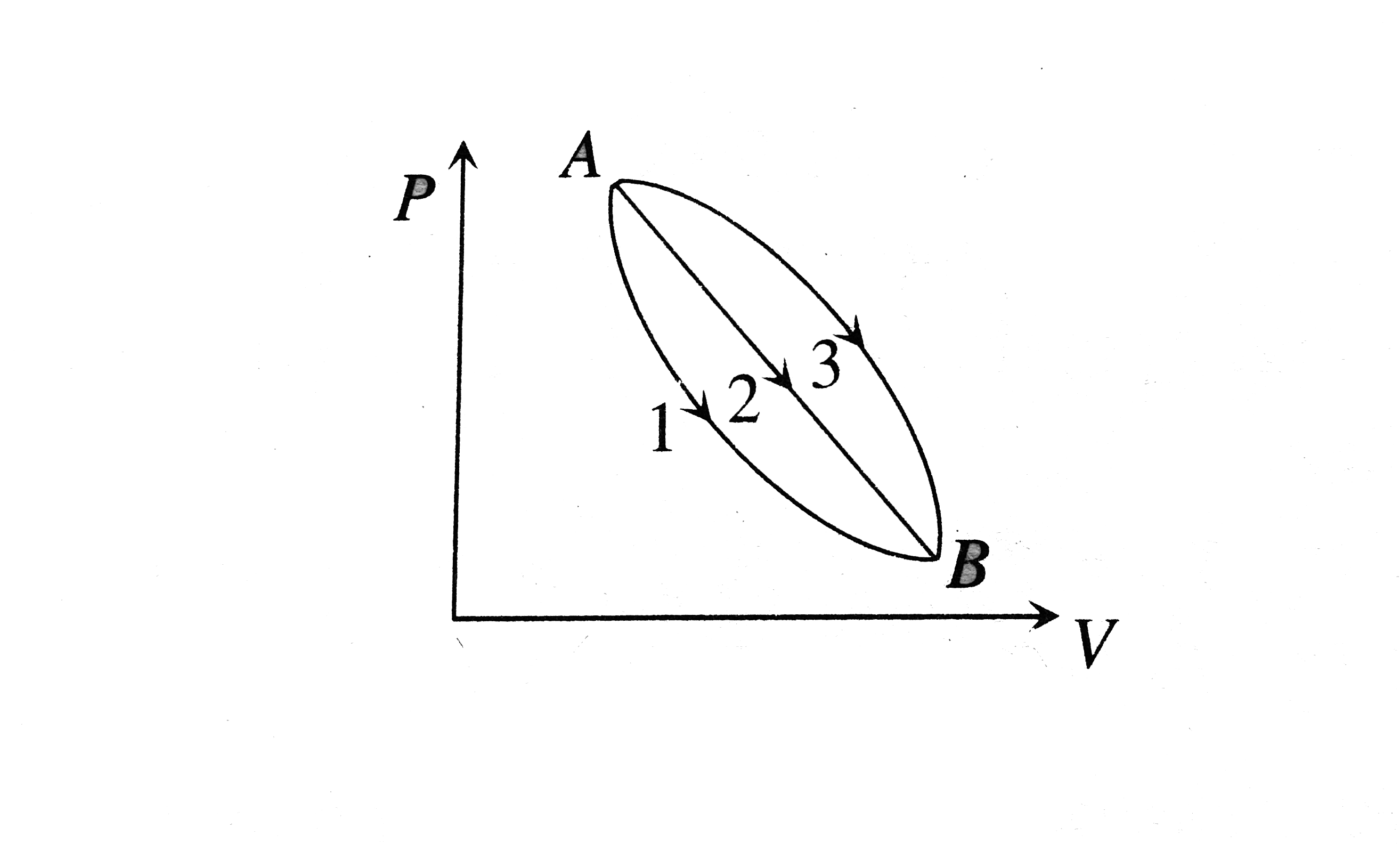 AQ1<Q2<Q3BQ1<Q2=Q3CQ1=Q2>Q3DQ1>Q2>Q3
AQ1<Q2<Q3BQ1<Q2=Q3CQ1=Q2>Q3DQ1>Q2>Q3
An ideal gas undergoes a four step cycle as shown in the P-V diagram below. During this cycle heat is absorbed by the gas in
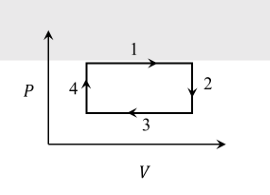
View SolutionAn ideal gas goes from State A to state B via three different process as indicate in the P−V diagram.
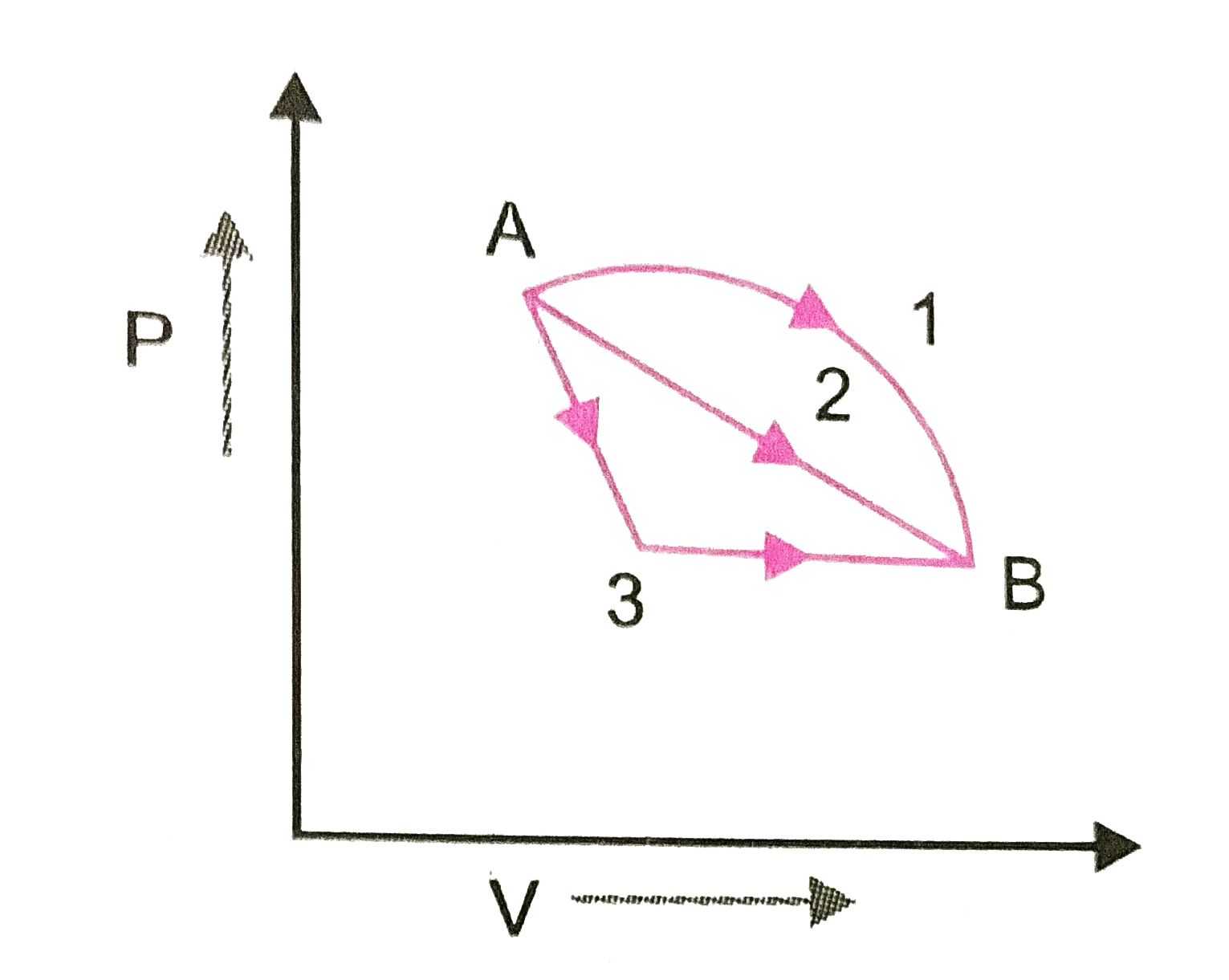
If Q2,Q3 indicates the heat absorbed by the gas along the three processes and ΔU1,ΔU2,ΔU3 indicates the change in internal energy along the three processes respectively, then
View SolutionFigure shows the p−V diagram of an ideal gas undergoing a change of state from A to B. Four different parts I, II, III and IV as shown in the figure may lead to the same change of state. ltBrgt
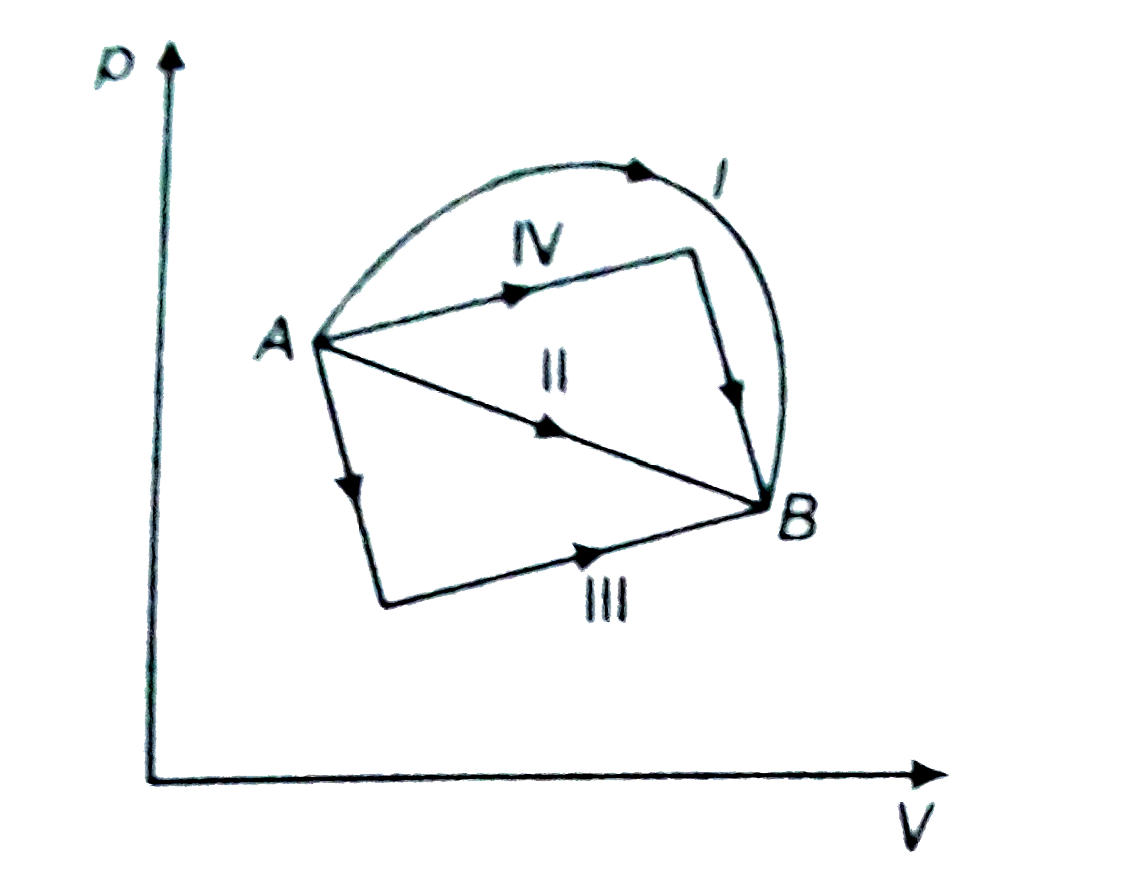
View SolutionA thermodynamic system goes from states (i) P1V to 2P1 , V (ii) P , V to P , 2 V . Then work done in the two cases is
View SolutionAn ideal gas goes from the state i to the state ∫ as shown in .the work done by the gas during the process
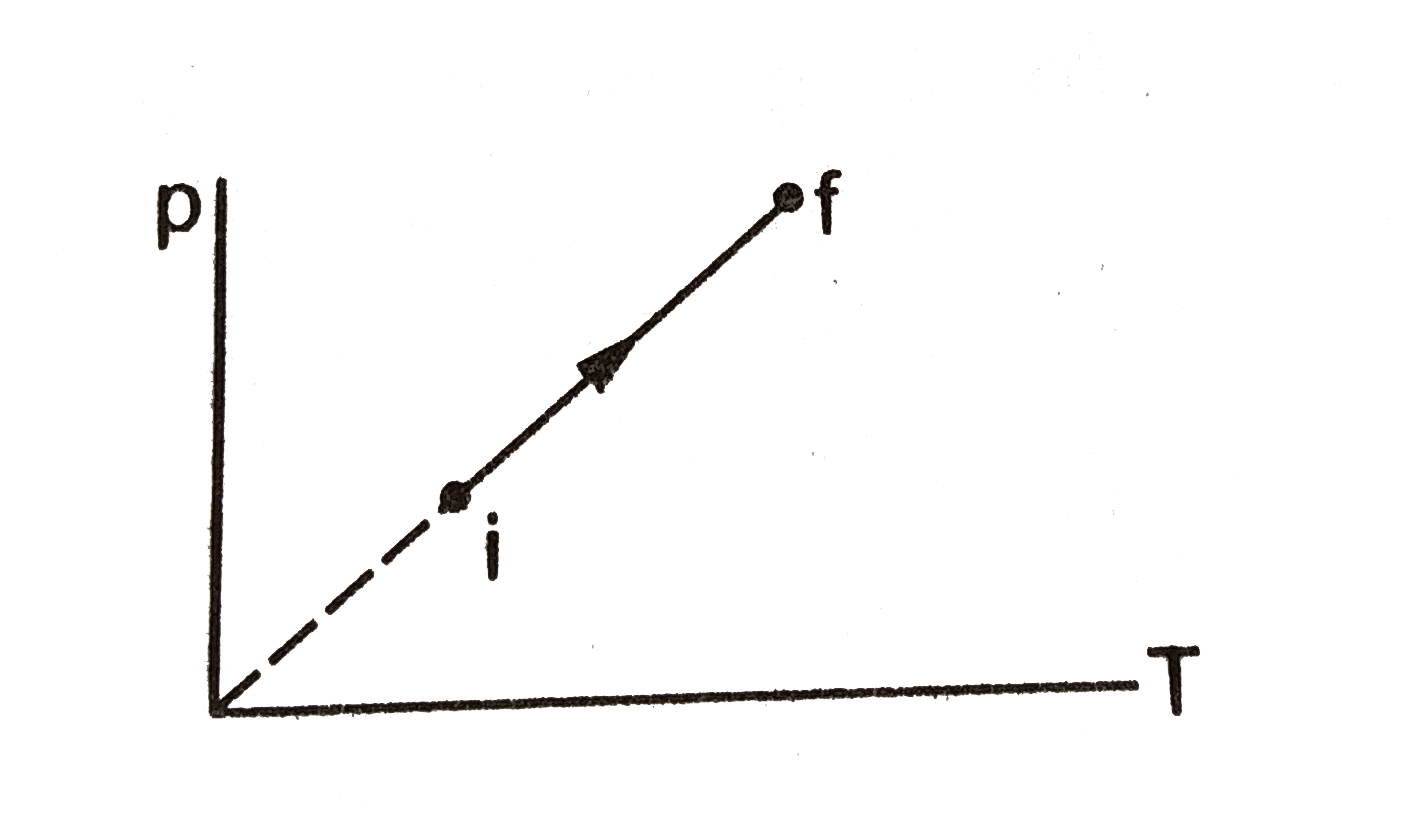
View Solution
